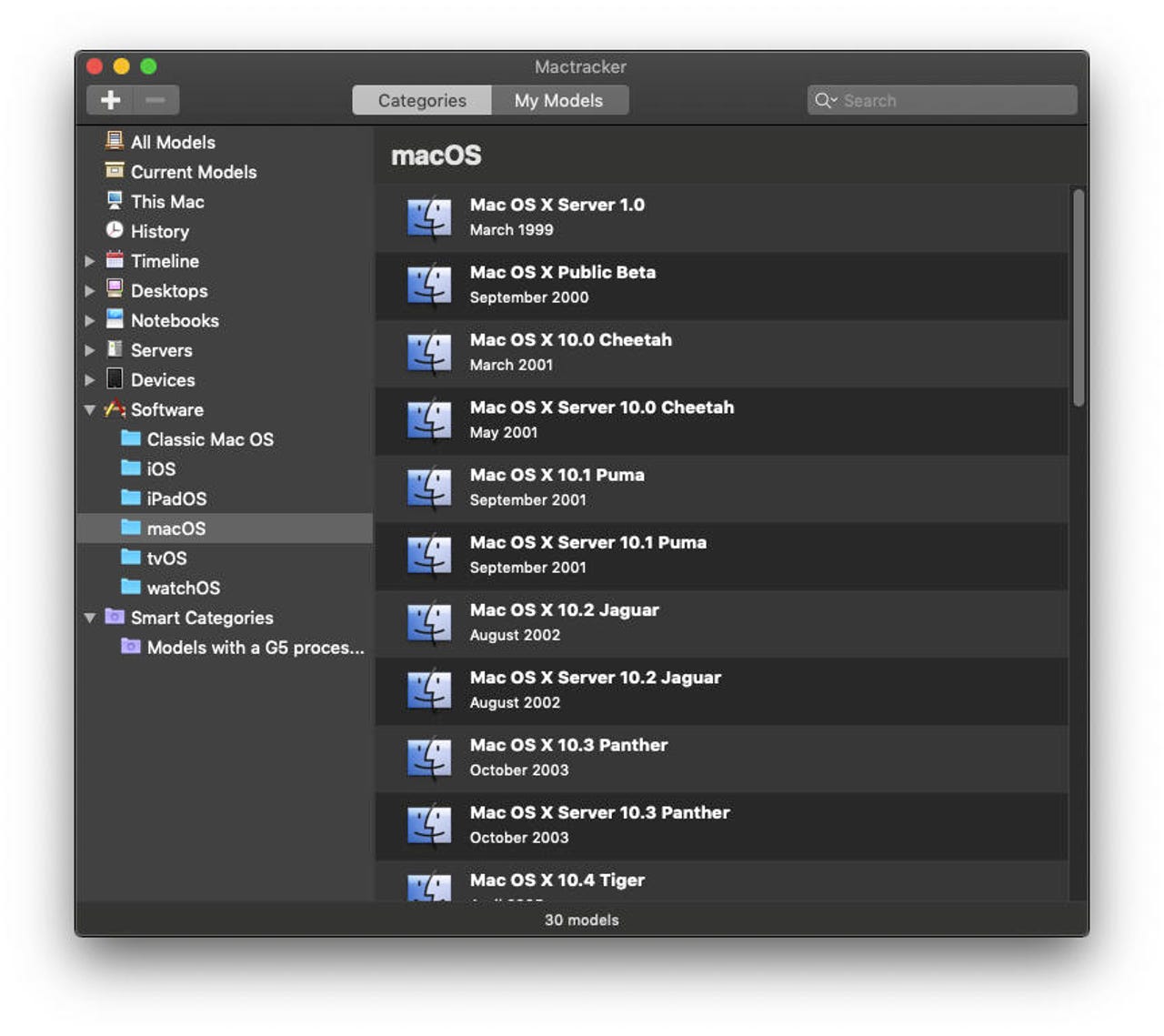Mactracker: An app only a Mac geek (or tech journalist) could love


Mactracker
The first iMac, model M4984, shipped in August 1998 and was discontinued in January 1999. It had a PowerPC 750 (G3) processor running with one core at 233 MHz. It was Bondi Blue and seemed more like a piece of candy than a computer.
Must-see offer
In January 2002, Apple traded in the iMac's CRT for a flat panel, introducing model M6498 in January 2002. It also had a single-core processor, but this PowerPC was a 7450 v2.1 running at either 700 or 800 Mhz.
As it turned out, this would not be the last CRT Mac. Apple also introduced the eMac for education at the same time and shipped CRT-based eMacs to schools until October 2005, when it discontinued model A1002, ending Apple's involvement with CRT-based machines forever.
Apple would go on to change the iMac's form factor again in 2004 with the iMac G5, and again in 2008, with the first aluminum iMac, which had a thicker frame than current iMacs. And then, in October 2012, Apple introduced the A1418 with a Core i5 or i7, and iMacs have been based on this design ever since, including the 2020 Intel iMac introduced just a few weeks ago as part of Apple's Intel processor swan song.
There you go. A short, very detailed history of iMacs. I didn't spend days combing through internet sites to come up with that information. Nor did I summon it from my encyclopedic knowledge of Apple minutia, which I don't have.
Instead, I used a tremendously useful -- if very niche -- tool called Mactracker. It's a freeware app available for MacOS and iOS by Ian Page and has been under development with regular updates for almost 20 years.
This thing is exhaustive. It contains a detailed database of all Apple desktops, notebooks, and servers, along with all the various OS releases. It also catalogs all of Apple's iPads, iPhones, printers, displays, iPods, and even cameras and Apple TV models.
There's a detailed timeline that lets you see Apple introductions by year. Did you know that the only hardware Apple introduced in 1982 was a dot matrix printer? But 1983 was rocking. In that one year, Apple introduced the Apple III and Apple III Plus, which ranged in price (are you sitting down?) from $4,340 to $7,800. That $7,800 in 2020 money is more than $20,000, which puts the Mac Pro into a whole new light.
You can also use Mactracker to track your own Macs. And if you're curious about all the products Apple is currently shipping (except for the Beats stuff, apparently), Mactracker has you covered there as well.
So, who is Mactracker for? Well, it's a tool I use almost every time I write an Apple-related article to reference previous products and make sure I have models, pricing, and configuration correct. It's a favorite among tech journalists who cover Apple.
Beyond that, Mac managers and those who manage large groups of Macs may find Mactracker useful to help them quickly check which machines support which version of MacOS or iOS, when they were discontinued, and what configurations they contained.
And then, for everyone else, it's just cool if you happen to care about such things. Honestly, it's just such an amazing compendium of information in such an easy to access and small footprint. The fact that it's free means that, if you even have a passing interest in all things Apple, you might as well install it on your Mac or iPhone.
I would normally say you could use it to win bar bets or be the life of the party, but there's a pandemic. So, instead, I'm going to recommend you install it and just fantasize about winning bar bets or someday going to a party without risking anyone's life.
What? This is 2020. We celebrate dire and depressing right alongside cool software. It's the "new normal." No, I'm not bitter. How could I be? There's some intrepid dude out there who's been maintaining this wonderful, kind of useful software for almost two decades. Awesome.
What Macs have you owned over the years? At first, I thought my first Mac was that Bondi Blue iMac, but then I realized that was actually my company's first Web server, and I've had Macs for longer, going back to the Mac Plus and its 128K floppy drive. What about you?
You can follow my day-to-day project updates on social media. Be sure to follow me on Twitter at @DavidGewirtz, on Facebook at Facebook.com/DavidGewirtz, on Instagram at Instagram.com/DavidGewirtz, and on YouTube at YouTube.com/DavidGewirtzTV.